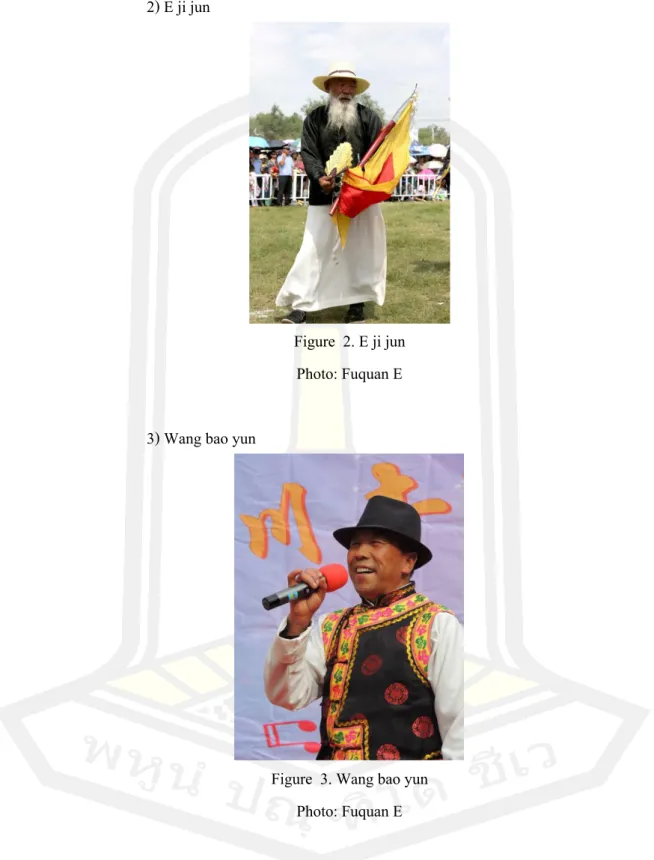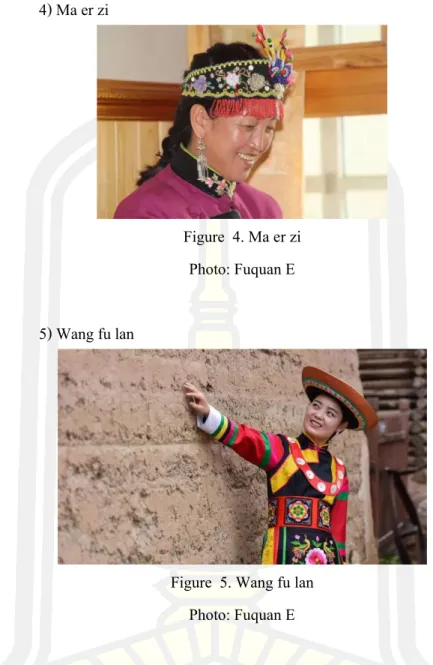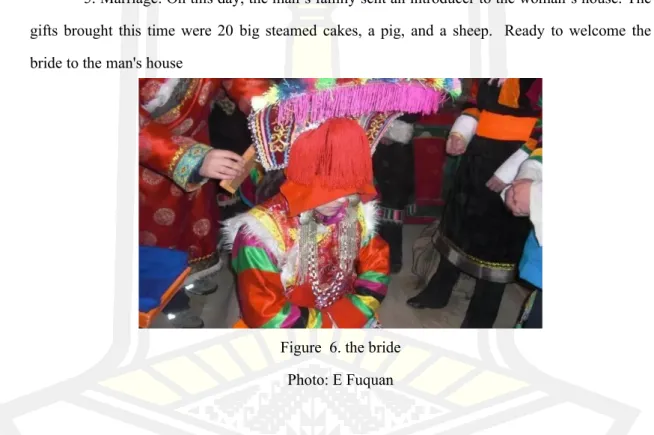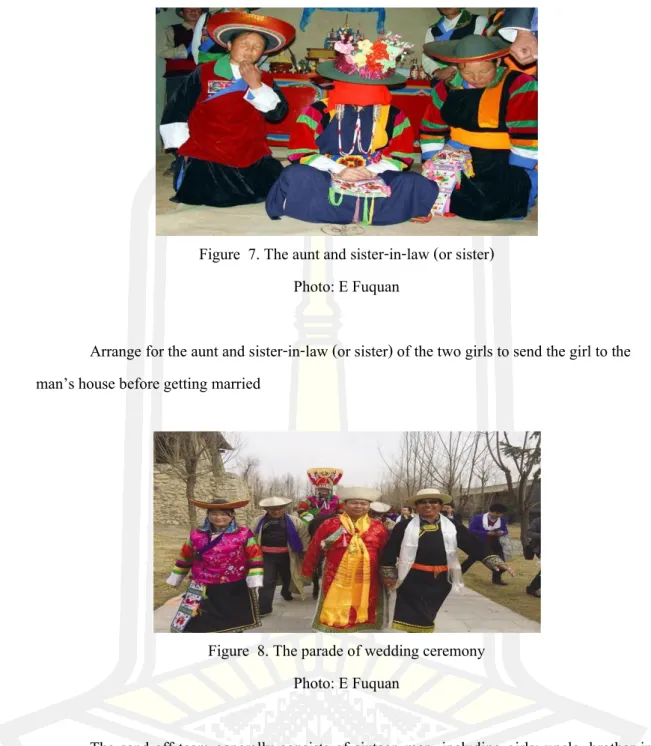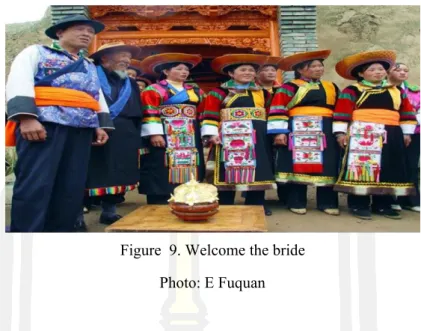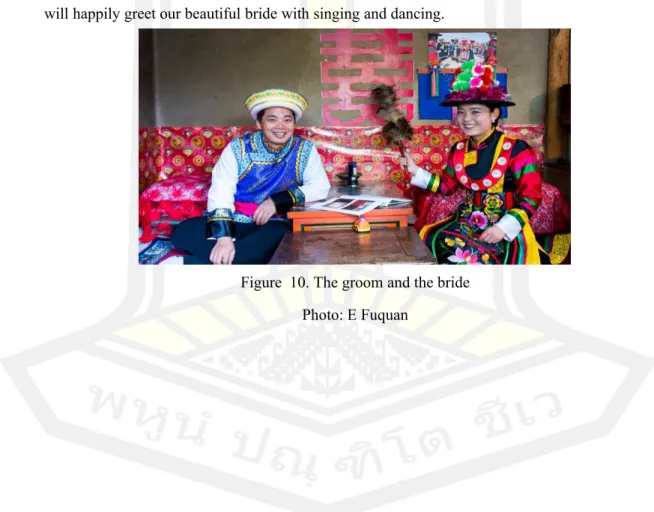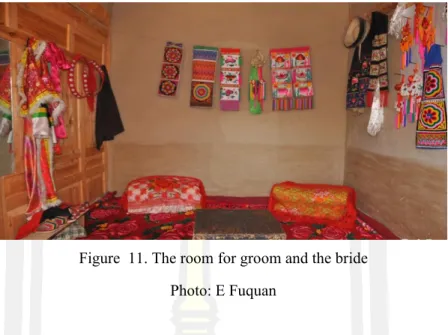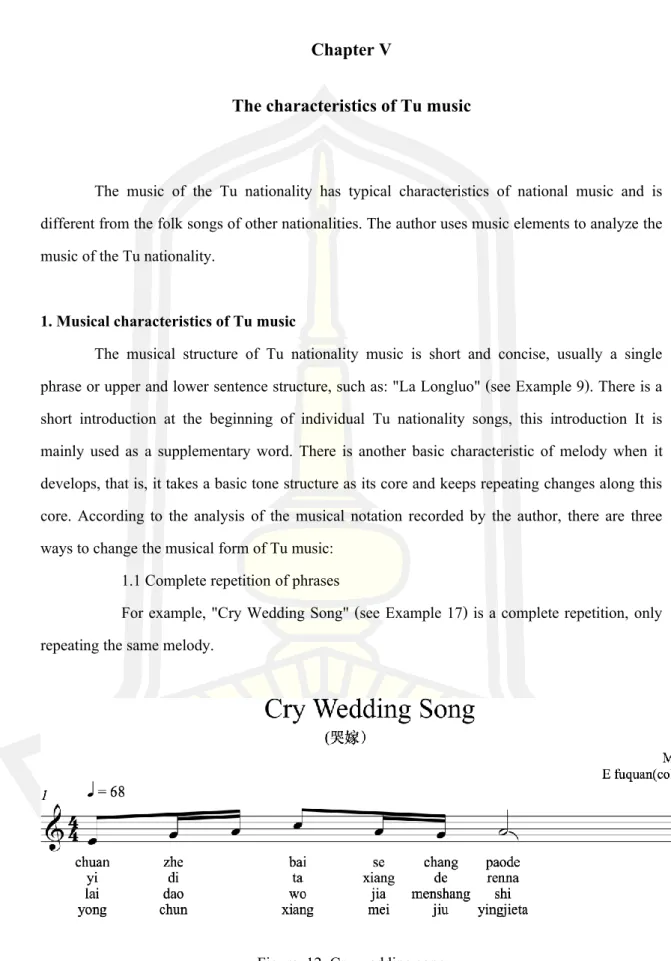Time is like quicksand in the hand that will always hold it, but it loses faster. I remember three years ago I entered the Mahasarakham University Conservatory of Music and went through various admission procedures. The scene was as clear as before, but now I must leave the campus. After the first draft of my paper was submitted, I carefully revised my thesis word for word, even down to the punctuation in my first draft, commenting on the questions in my paper one by one and making constructive and valuable comments. thoroughness of the professor is a model for me to learn in my future study and educational career.
Introduction
- Research Objectives
- Research Question
- Importance of Research
- Definition of Terms
- Conceptual Framework
From the perspective of Chinese history, Tu culture is the most important cultural element of Minhe County's folk music culture, and also an important part of Chinese minority culture. Therefore, it is urgent to protect and inherit the wedding music of the Tu nationality.
Literature Review
- Basic knowledge of the nationality of Qinghai Province
- The social culture of the Tu people in Minhe County, Qinghai Province, China
- Theories used in this research
- Documents and research related to Tut people in various fields
It can be said that the study of the music of the Tu nationality has made some progress. The musical culture of the Tu nationality is the same as that of other ethnic minorities.
RESEARCH METHODS
- Research Scope
- Research Process
- Data analysis
- Tu music culture
- Traditional music of the Tu people
It is hoped that the music of the Tu nationality can be inherited more comprehensively and historically. All folk songs of the Tu nationality have the same melody as the wedding song. The lyrics of Tu folk songs are also an important feature of Tu nationality wedding songs.
Therefore, the music of the Tu nationality is part of the art of social ideology. In such circumstances and environments, the music of the Tu nationality may appear above. Therefore, it is necessary to correctly understand the impact of information diversification on the musical culture of the Tu nationality.
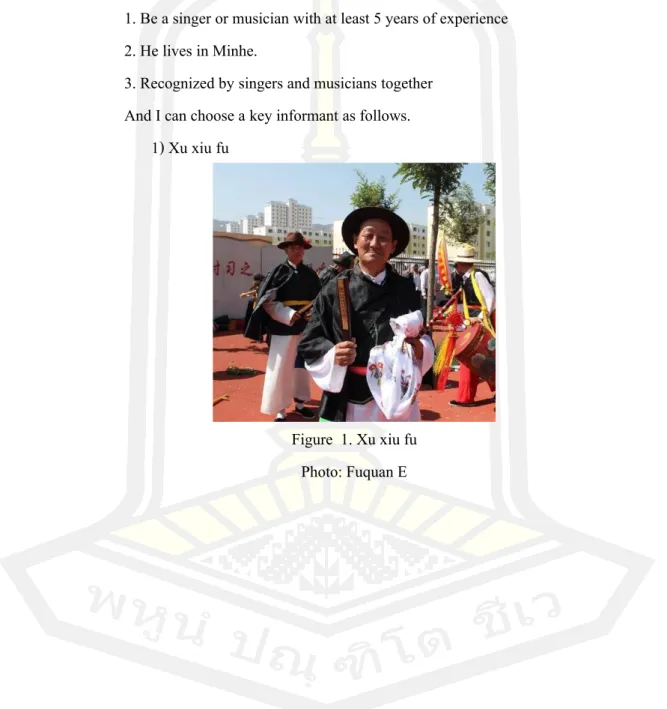
The characteristics of Tu music
Musical characteristics of Tu music
The musical structure of Tu nationality music is short and concise, usually a single sentence or a structure of higher and lower sentences, such as: "La Longluo" (see example 9). The song [Cry Marriage Song] mainly describes the sadness of the daughter who is far away from her parents and the unwillingness to leave her hometown. The song's melody is repeated, praising the parents' 18 years of parenthood and gratitude.
The song "Crying Marriage" has only one section, and the angles rise and fall to form a piece of music. The melody goes up and then down, and the repeated ups and downs of the phrase make it full of sad emotions. Extract the part of the previous theme and then make developmental changes, such as "Matchmaker in the middle" (see Example 3).
Melody characteristics of Tu music
For example, "Matchmaker in the Middle" (see example 3) is a change and repeat that is more flexible and free. 31 closely related to the upper and lower thirds, and the role of thirds in the mode is very visible. Musical features of wedding songs of the Tu nationality, such as "Where do people come from" (see example 4).
The direction of the melody in this music greatly influences the musical style of other music and is an important factor that reflects the characteristics of the music of the Tu nationality. The direction of this melody has certain edges and corners, but it emphasizes the hearty ethnic style of the Tu people. In the melody process, sliding notes like "La Longluo" (see example 11) will be added to express feelings and emotions.
The scale and mode characteristics of Tu music
It is a typical singing method in Tu wedding songs and a technique commonly used in Tu folk songs.
The characteristics of the rhythm of the Tu music
Therefore, the existence of Tu folk songs is obviously inseparable from the long-term production and social practice of the Tu people. Therefore, the Tu folk songs serve the life rituals of the Tu people and have a very clear purpose. As an intangible culture, the musical culture of the Tu nationality originates from and exists in folk, and has its specific cultural origins.
Therefore, the traditional way of inheriting the music of the Tu nationality in the past was the natural preservation of folk. The music score of Tu nationality music plays a very important role in the preservation and learning of folk and Tu nationality music culture. Protecting the heirs is undoubtedly the most effective way to protect the musical culture of the Tu nationality.
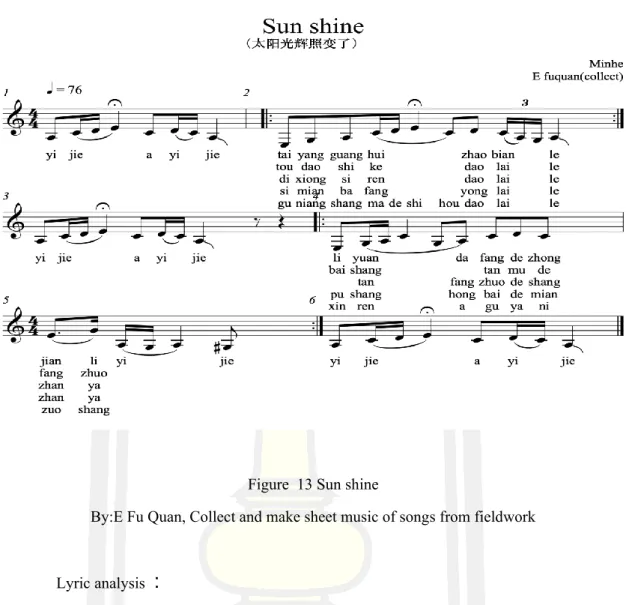
The way to promote and preservation the Tu music culture of Tu Nationality in Minhe
Folk natural preservation of Tu nationality music in Minhe County
The content of the lyrics changes with the development and change of the scene and time." In the process of inheriting the music of the Minhe and Tu nationalities, the family style preservation method is one of the most important preservation methods. They said: "In the process of inheriting the folk music from the Tu nationality, in addition to the family preservation method, there is also the social preservation method.
Whether you are an adult or a child, you can sing a few folk songs of the Tu nationality in the slack or busy time. In the past, the popular form of singing and listening in Pyeongchang has been replaced by other forms of entertainment, thus disappearing the lives of the local people. Most of the rural areas have been contracted to a large area to implement modern agriculture.
Preservation and Protection of Tu Nationality Music Culture in Minhe County
With the accelerated development of China's economy and society and the promotion of urbanization, most of the rural population has turned into an urban population. Folk music can be suitably adapted to adapt to the development of the times, so that the musical culture of Tu nationality can be better inherited, protected and developed in modern society. In China, since 2008, the government has issued a national vigorous advocacy and implementation of the comprehensive excavation and protection of intangible cultural heritage in various regions.
Literary and artistic workers, experts and scholars in Qinghai Province of China also explored the folk music of the Minhe region, and collected folk music such as the wedding songs of the Minhe Sanchuan region and the Tu folk songs of the Sanchuan region. The music of the Minhe Tu nationality originated in the Tang Dynasty of China; it has a fixed pitch and genre, and there are currently more than 9 types known; it was very popular in rural areas in 1950s China; it started in the mid-1960s because of people's labor The change of the way of preservation made the heat of preservation gradually decrease; because the music of the Minhe Tu nationality was locally spread by word of mouth, there was no specific lyrical song recorded in the past. That is why it is very important to collect, organize, record musical scores and research folk songs of the Min and Tu nationalities.
Conclusions, discussions, and suggestions
Conclusion
Characteristics of music structure mainly have 7 types: one-sentence structure, two-sentence structure, three-sentence structure, four-sentence structure, variation (changing) structure, multi-sentence structure, single-two-part structure. This diagram and overview of the musical elements of the Min and Tu nationality music provides important information for the researchers in the follow-up study. 50 Through descriptions of important singers of Tu nationality music and other related personnel in my field research, the historical process of preservation of Minhe Tu nationality music culture in the past modern era (after the 1960s), and the reasons why the preservation process has gradually disappeared from prosperity.
Among them, family preservation is mainly taught by the singer in the form of the family, from generation to generation by word of mouth. In the past, the preservation in social activities was generally done by the singer of Tu nationality music, who led everyone in a coordinated manner. In the 1980s, the preservation of Tu nationality music slowly began to disappear due to some social reasons.
Discussion
The music of the Minhe Tu nationality was created and passed on by the local working people in the past, and there is no fixed composer or lyricist. As an important carrier of the legacy of Tu nationality culture, Tu nationality music has an important position in the hearts of Tu nationality people. The protection and legacy of the musical culture of the Tu nationality and our ethnic minorities is of great importance, and specific protection and legacy measures have been proposed in accordance with the local geographical and cultural environment.
The musical culture of many Tu nationalities is a collective activity of the Tu nationalities and is an indispensable prerequisite for the culture of the Tu nationality. The cultural heritage television program combines music of foreign nationalities with current entertainment music, which is another innovation. The above points are the problems that the musical culture of this nationality has to face in the process of inheritance, development and innovation.
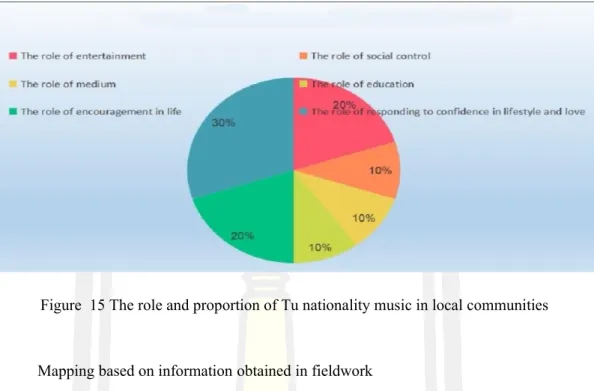
Suggestion
The combination of ethnic traditional music and new folk songs has already been mentioned in the previous paragraph. So that the music culture of the Minhe Tu nationality can show its artistic charm and develop in today's society. Wedding and Etiquette Songs of Tu Nationality in Minhe Area, Journal of Qinghai University for Nationalities.p.56.
Cultural Diversity and Religious Identity: An Investigation of the Coexistence of Religious Diversity of the Tu Nationality in the Minhe Sanchuan Region Religious Studies, Northern Music. A Preliminary Study on the Culture of Scholars of Your Nationality, the Minhe Land Acquisition Area as an Example. Journal of Qinghai Normal University, p. The history and current state of research on the folk music of the Tu nationality, Qinghai Ethnic Studies, p.32-39).
